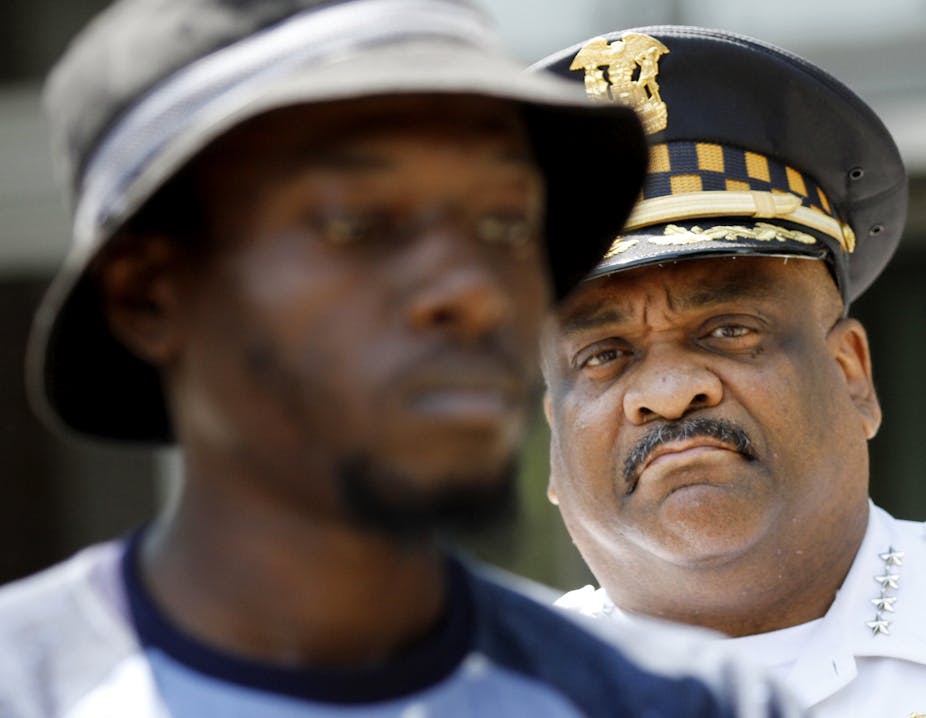The recently published Department of Justice investigation of the Chicago Police Department uncovered unsettling uses of force.
Based on a 13-month investigation, the report details how the officers in the nation’s third-largest police agency engaged “in a pattern or practice of using force that is unjustified, disproportionate and otherwise excessive.”
Their findings were based on a review of more than 170 officer-involved shootings and related fatalities between January 2011 and April 2016, including the shooting death of black teenager Laquan McDonald by a white police officer. The report also found that proper investigations into uses of excessive force were not routinely conducted by police officials.
The Chicago report follows a 2015 DOJ investigation into civil rights violations in Ferguson, Missouri. And, last year, the DOJ found the Baltimore City Police engaged in conduct that violated citizens’ First and Fourth Amendment rights, again by using excessive force.
Some scholars classify police violence as a public health problem. Our own research shows that youth exposed to various types of violence such as seeing someone shot or hearing about robberies in their community often become violent themselves.
Could the same be true for police?
We believe it’s an important question to ask. Doing so may be the key to understanding the cycle of violence that has caught up so many American cities.
A cycle of violence
Whether one is a victim of violence or merely a witness, the psychological, emotional and physical impacts are real and enduring.
The ramifications of violence are especially damaging for the young. Young people exposed to violence are more likely to associate with other teens who engage in delinquent activities such as drug use and who get into trouble at school. That can lead to increased levels of violent behavior.
There is tremendous evidence that those exposed to violent events suffer a range of additional negative consequences such as post-traumatic stress, anxiety or depression that endure after the violence has ended.
We recently proposed a broad theoretical framework to learn more about what protects young people from exposure to violence in their communities. We examined factors such as community, family and friends, and individual characteristics to explain why some youth are exposed to more violence. Our framework includes elements such as community support, parenting practices, association with deviant peers and young people’s willingness to accept responsibility for the results of their behaviors. The framework was developed by analyzing data from a sample of 78 Chicago neighborhoods clusters. These meaningful groupings of adjacent residential and business areas across the city were selected for their racial/ethnic and socioeconomic diversity.
Our work is informed by a classic criminological theory that lays out three factors that make you more likely to be a witness or victim of violence. These factors are: 1) exposure to offenders wishing to commit crimes, 2) the availability of suitable targets for crime and 3) absence of “capable guardianship” to prevent crime. Young people can be their own capable guardians – or this role can be played by parents or the police.
While crime is a fact of modern life and offenders may be ever-present, our results suggest that young people who spend time in the community unsupervised by parents or hanging out with deviant peers are more likely to be targets. Also, young people who take ownership over their own behavior – rather than believing they have no control over what happens to them – are at less risk. Our work suggests these factors are stronger determinants of exposure to violence than neighborhood characteristics such as high rates of unemployment and poverty.
Effects on the police force
While there is much research dedicated to understanding the harmful effects of violence on youth, this most recent DOJ report obligates the public to ask why law enforcement officers are resorting to more violence. Does more violence by citizens result in more police violence, or does police violence feed back into the community and increase youth violence?
Some have suggested that a spike in homicides has necessitated a harsher response on the part of police. And the numbers do show homicides increasing in Chicago.
However, some of the violence described in the DOJ report on Chicago did not come out of conflicts that required violent responses. Rather, the report describes an overstepping of boundaries by police that may lead to increased violence in the communities. Examples include shooting at fleeing people who posed no immediate threat to police or citizens, firing at moving vehicles without just cause and even kicking when not necessary.
We need new research that asks: What drives officers who engage in excessive force? What effects does exposure to violence have on them? We’d expect to see some of the same effects on police as we see for youth. Just as young people have a threshold that, once surpassed, exacerbates the negative consequences of violence, officers likely do, too.

